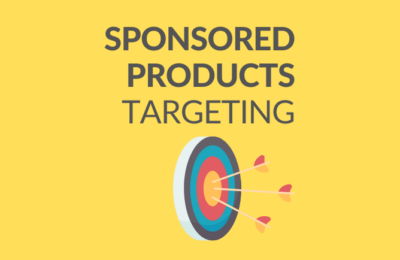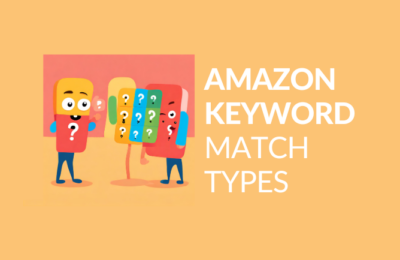In online marketing, Amazon ads impressions are crucial for the success of advertising campaigns. This metric shows how often an ad is displayed. It also directly affects the visibility of the product and the effectiveness of the advertisement. Impressions provide insight into the reach of a campaign and indicate where improvements may be needed. For example:
a high number of impressions with a low click-through rate (CTR) might suggest that the ad or the keywords used are not ideally targeted to the audience.
A targeted analysis of the impact of impressions on advertising performance enables marketing specialists to create more effective campaigns, use the advertising budget more efficiently, and ultimately achieve better results.
Why is the Number of Impressions So Important?
Impressions from PPC marketing campaigns on Amazon are important because they allow you to measure the reach of your advertising activities. The more impressions, the more potential customers see your advertisement. This eventually leads to a larger number of visits to the product page and generates sales.
What Influences Campaign Impressions on Amazon?
The number of views a marketing campaign receives on Amazon depends on several factors, including:
- Advertising budget: The higher the advertising budget, the more money can be spent on advertising campaigns, which can increase the number of views.
- CPC bid (Cost per Click): A higher CPC bid can increase the chances of ads being displayed. Amazon may favor ads that generate higher revenues per click.
- Quality of the ad: Amazon also considers the quality of the advertisement. High-quality ads that generate more clicks and conversions can lead to a higher number of impressions.
- Relevance of ads: Ads that are connected to the user’s search query or product theme can have a higher chance of being displayed in search results.
- Competition: The greater the competition for certain keywords or product categories, the more difficult it is to receive a large amount of impressions. It can also affect CPC prices and the number of ad views.
- Campaign history: Amazon may consider the history and results of previous advertising campaigns when deciding on ad placement.
- Seasonality: Product demand can be seasonal, which can influence impressions depending on the period.
Analyze these factors carefully and improve your PPC campaigns on Amazon to increase impressions and achieve better sales results.
Common Problems with Impressions in PPC Advertising
High Number of Impressions, Poor Conversion
Your ad is often displayed but generates only a few of the desired actions from users, such as clicks or purchases. This can have several causes:
- Inappropriate Keyword Matchings: The ad might be shown to users who are not interested in the product or offer, leading to low conversion. Invest time in researching relevant keywords connected to your products. Use keyword analysis tools like Amazon’s Keyword Planner or external tools and find suitable ones for your products. Amazon offers various keyword matching types, such as broad, phrase, and exact. Experiment with various matching types for your campaigns. For example, use exact matching for the most relevant keywords to limit unrelated traffic. Phrase matching should be used for more flexible queries. For more information on keyword match types on Amazon refer to our blog here.
- Poor Quality of the Ad: The ad may not be compelling or attractive enough for users. Potential customers do not click on the offer and make no purchase. Improve titles and descriptions and optimise images.
- Problem with the Landing Page: Users reach the product page after clicking on the ad. However, if this page is cluttered, unattractive, and not encouraging to purchase, this leads to missing conversions. Conduct A/B tests. Amazon allows sellers to conduct A/B tests through analytical tools and experiments. Optimize the presentation of your products and advertising campaigns. This can help increase sales effectiveness.
- High Competition: Poor conversion can be due to intense competition in the market. In such a situation, it is much harder to get users to click on the ad. Find a better provider for the product that offers better quality at a more attractive price.
Low Number of Impressions, No Conversions
This means that the ad is relatively rarely displayed compared to expectations or other campaigns. The advertised product is practically invisible to users. If a PPC ad on Amazon generates a low number of impressions, this can have several reasons:
- Too Low Price per Click: The price per click in your CPC campaign (Cost per Click) on Amazon is too low to compete with other advertisers, resulting in your ad not being displayed. Increase the bid price.
- Insufficient Visibility: The ad may be poorly matched to the keywords used by users. This restricts their visibility in search results or other areas. Make sure that the keywords in the campaign are precisely matched to the product and the search intention of the customers.
- Competition: High competition in a particular category can make it harder for the ad to be noticed, especially if the advertising budget is limited.
- Errors in the Campaign: There could be a problem with the configuration or optimization of the campaign, leading to a low number of impressions.
- Scope of the Advertisement: The ad might be targeted at a small audience or geographically restricted, affecting the number of possible impressions.
- Low Interest or Demand: The product or promotional offer may not be particularly attractive to users at a certain time or on a particular platform.
To increase the number of impressions of PPC ads on the Amazon platform, take steps to better align your ad with the needs of users. Try to increase your advertising budget or adjust your advertising strategy to the competitive conditions of the market. Our AI-powered ACOSBOT helps you achieve better ROI and lower ACOS. Try it for free today.
For a more comprehensive guide on Amazon advertising please read our Ultimate Guide for 2024.



